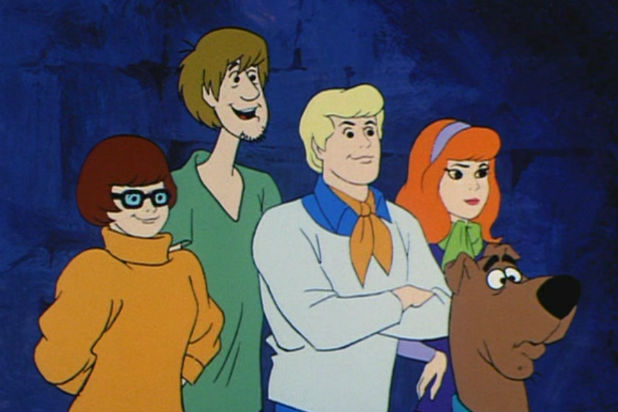You are using an out of date browser. It may not display this or other websites correctly.
You should upgrade or use an alternative browser.
You should upgrade or use an alternative browser.
Random thoughts 1: Just Sayin'
- Thread starter Lohrenswald
- Start date
- Status
- Not open for further replies.
Ever notice how Eastern animation tends to make their characters "cuter" and just generally more visually appealing to look at while Western animation seem to be dedicated to making characters look like the most horridly deformed people to ever exist?
A comparison to illustrate the point:


There has to be some cultural reason behind this.
A comparison to illustrate the point:


There has to be some cultural reason behind this.
Traitorfish
The Tighnahulish Kid
There are a bunch of reasons for how the difference plays out it as it does, and you could go into target audiences and cultural perceptions and yadda yadda.
But the main one, I think, is that both aesthetics originated as a sort of rebellion. In postwar Japan, there was a strong expectation that adults should be sober and sensible and serious; hanging onto willfully childish things like cute characters became a non-confrontational way of pushing back against these expectations. In postwar America, adulthood and conformity was not associated so heavily with seriousness, but the adult world was expected to be neat and picturesque and nice, so grotesque and deformed characters similarly became a way to express dissatisfaction with grown-up norms.
But the main one, I think, is that both aesthetics originated as a sort of rebellion. In postwar Japan, there was a strong expectation that adults should be sober and sensible and serious; hanging onto willfully childish things like cute characters became a non-confrontational way of pushing back against these expectations. In postwar America, adulthood and conformity was not associated so heavily with seriousness, but the adult world was expected to be neat and picturesque and nice, so grotesque and deformed characters similarly became a way to express dissatisfaction with grown-up norms.
Defeated Japan… isn't it a bit like post-WWI Germany? Prior to that the national stereotype of a German was supposed to be that of a yearlong Oktoberfester.In postwar Japan, there was a strong expectation that adults should be sober and sensible and serious; hanging onto willfully childish things like cute characters became a non-confrontational way of pushing back against these expectations.
Ryika
Lazy Wannabe Artista
- Joined
- Aug 30, 2013
- Messages
- 9,393
Counter argument:A comparison to illustrate the point:
Spoiler :


Zkribbler
Deity
If NY state [or city] secedes from the union, Trump will no longer be qualified to be President. 

EgonSpengler
Deity
- Joined
- Jun 26, 2014
- Messages
- 12,260
I'm not an expert on Japanese cartoons, but the American comics I've read have all idealized their characters' appearances to absurd degrees. In animation, Disney movies tend to emphasize youth and beauty for their female protagonists, whether it's Cinderella and Alice in the 1950s or Frozen and Moana today, while its (adult) male protagonists project unnatural size and strength - from Balloo in The Jungle Book to Maui in Moana.
Disney & co use a ton of anthropomorphized animals. In Japanese animation I've seen - Miyazaki, mostly - I think those characters are usually meant to be frightening or bizarre. I'm not sure what that says about American audiences.
Disney & co use a ton of anthropomorphized animals. In Japanese animation I've seen - Miyazaki, mostly - I think those characters are usually meant to be frightening or bizarre. I'm not sure what that says about American audiences.
GoodSarmatian
Jokerfied Western Male
- Joined
- Apr 25, 2006
- Messages
- 9,408
So, I think Civ 6 might be a bit prejudiced against Germans...
More than a year after release I just noticed this:
When you meet Barbarossa he says he's sure that you rule your lands like him. "Mit rechter Gewalt". The translated text says "Through might." In the old-timey German he speaks it's "Through righful/righteous might/force.
In modern German it means
"With/through right-wing violence".
More than a year after release I just noticed this:
When you meet Barbarossa he says he's sure that you rule your lands like him. "Mit rechter Gewalt". The translated text says "Through might." In the old-timey German he speaks it's "Through righful/righteous might/force.
In modern German it means
Spoiler :
"With/through right-wing violence".
Last edited:
Ryika
Lazy Wannabe Artista
- Joined
- Aug 30, 2013
- Messages
- 9,393
The secret of having a tidy home is to have the amount of cleaning up you do be greater than the chaos you produce. It seems to me, most people solve that problem by increasing the amount of tidying up they do, but I naturally decided that I need to produce less chaos. And that's even though my mother often told me to clean up, but never to not make a mes, so I'm really glad that I came to that conclusion, because it's clearly the superior choice between the two.
Lohrenswald
世界的 bottom ranked physicist
I saw someone theorise, and I'm not entierly sure how plausible this is, but it has made me wonder, that Disney basically completely ditching 2D animation in favour of 3D has like lead to a decline in quality of 2D cartoons (since Disney is such a leader in animation)Ever notice how Eastern animation tends to make their characters "cuter" and just generally more visually appealing to look at while Western animation seem to be dedicated to making characters look like the most horridly deformed people to ever exist?
Compare old and new:
Spoiler :


This isn't a rant or a rave, so it doesn't belong in those threads, but this certainly isn't worth a thread of it's own so here it is:
I finally got around to watching the movie Chappie today and my wife sat down to watch it with me. The part where the gang he was with just dropped him off in the middle of nowhere with some random thugs and they beat and torture him while he begs them to stop made my wife really emotional to the point she was on the brink of tears.
The odd part of this to me was that we also watched District 9 together a while back and she didn't seem to care nearly as much about the abuse the aliens were suffering in that movie. I wonder what that says when a human seems to care more for the suffering of an artificial being that display's human-like intelligence than the suffering of another organic, albeit alien, being.
I finally got around to watching the movie Chappie today and my wife sat down to watch it with me. The part where the gang he was with just dropped him off in the middle of nowhere with some random thugs and they beat and torture him while he begs them to stop made my wife really emotional to the point she was on the brink of tears.
The odd part of this to me was that we also watched District 9 together a while back and she didn't seem to care nearly as much about the abuse the aliens were suffering in that movie. I wonder what that says when a human seems to care more for the suffering of an artificial being that display's human-like intelligence than the suffering of another organic, albeit alien, being.
So I more or less think you 'Muricans and your Thanksgiving is all a little phony but some turkey recipes are just great.
Broken_Erika
Play with me.
I'm starting to think that 127x230 might be to big a map size for a standard Civ 2 game, especially with the 256 city limit....
Ryika
Lazy Wannabe Artista
- Joined
- Aug 30, 2013
- Messages
- 9,393
I miss watching TV. 
And by that I don't mean that I miss watching TV shows, because most of them were terrible, but... there's something to be said about the time before I had a PC with a permanent Internet Connection. Knowing that at a specific time, a specific show will start, and the feeling of looking forward that comes with it. I guess that's somewhat similar to regular livestreams, but the feeling just isn't quite the same in a world where you an watch anything anywhere and at any time.

And by that I don't mean that I miss watching TV shows, because most of them were terrible, but... there's something to be said about the time before I had a PC with a permanent Internet Connection. Knowing that at a specific time, a specific show will start, and the feeling of looking forward that comes with it. I guess that's somewhat similar to regular livestreams, but the feeling just isn't quite the same in a world where you an watch anything anywhere and at any time.
Lohrenswald
世界的 bottom ranked physicist
I don't share your sentiment at all
GoodSarmatian
Jokerfied Western Male
- Joined
- Apr 25, 2006
- Messages
- 9,408
It's always fun to see fools fall for satire. The Postillon (think German Onion) wrote that new elections are scheduled for December 24, and some people are outraged.
We'll have to agree to disagree then.I don't share your sentiment at all
Broken_Erika
Play with me.
T.V. Sucks.
- Status
- Not open for further replies.
Similar threads
- Replies
- 1K
- Views
- 49K
- Replies
- 3
- Views
- 1K
- Replies
- 1K
- Views
- 51K
- Replies
- 976
- Views
- 61K

